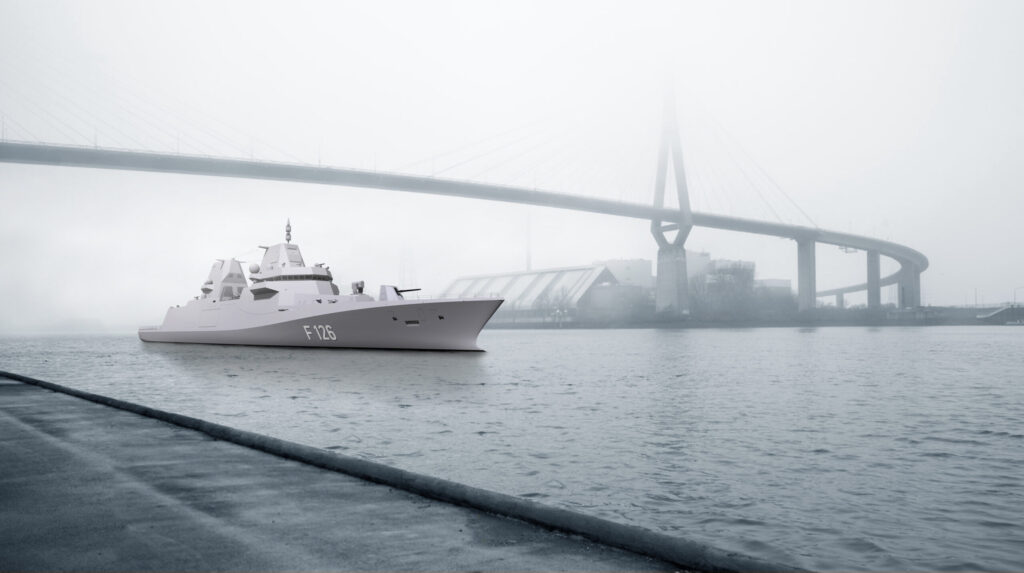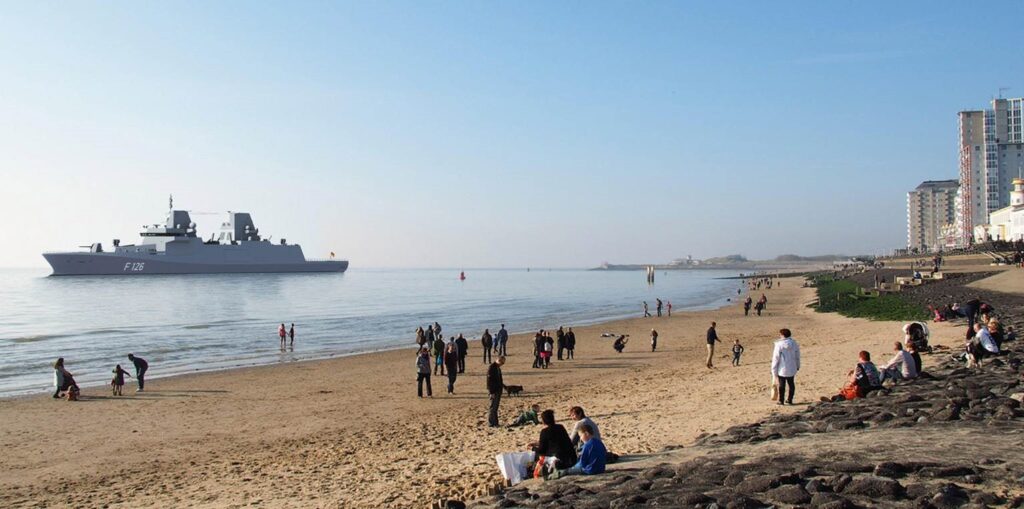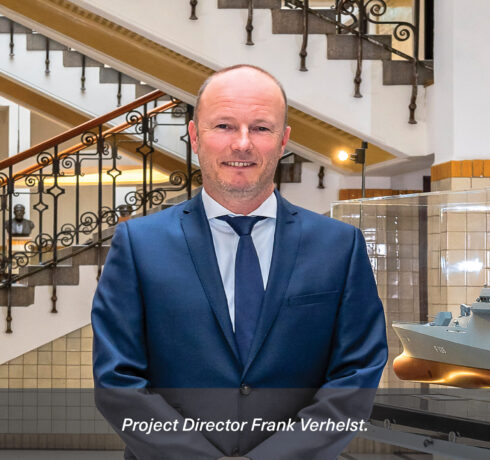A lot has been written about the size of Damen Naval’s F126 frigate construction project for the German Navy. This is understandable: the project is undoubtedly large. In fact, it is the biggest contract ever awarded by the German Navy. It is also the biggest contract ever secured by Damen Naval.
However, there are other notable characteristics of the F126 project. “The fact is that – on so many subjects such as requirements management, project planning, information security, risk management to name a few – the F126 project is a pioneering project,” says Project Director Frank Verhelst. As such, since the official contract signing in June 2020, the project team spent the first phase of the project learning to work with new methodologies, processes and tools. While this continues to be an ongoing and complex implementation process, Frank notes that the pace really picked up speed towards the end of 2021. “All the sub-projects, all the staff members, and all the support teams switched into a bigger gear.”
 The coming year will be a busy one, with the main focus of the F126 Project on engineering, procurement and management activities.
The coming year will be a busy one, with the main focus of the F126 Project on engineering, procurement and management activities.
A critical aspect of the first 18 months of the F126 project has been the recruitment and training of a team of skilled experts. To that end, Damen Naval’s HR department has succeeded in finding people for the majority of job vacancies on offer. “The number of people on the team has more than doubled in 2021 and we are close to our maximum size.”
Such an expansion of personnel has not been without its challenges. First and foremost, the team is based in three offices, Vlissingen, Schiedam, Hamburg, and many people forced to work from home. Furthermore, for security reasons, all project operations must take place within a secure IT work space.
“It has always always felt like a distant point on the horizon, but the production of the first vessel – in German, the ‘Freigabe zum Bau’ milestone – is less than two years from now!" Frank Verhelst
The coronavirus pandemic, of course, has had an impact, requiring the establishment of secure IT networks in the ‘working from home’ environment too. And, although the team has learned to deal the remote working situation and the intricacies of virtual meetings, Frank is looking forward to getting to know the team members on a more personal level: face-to-face rather than via a computer screen. “Just like the World Health Organization, I am also cautiously optimistic about the end of the pandemic,” he adds. “The value of being with a team ‘in person’ cannot be overestimated.”
 The steel cutting ceremony is planned for December 2023.
The steel cutting ceremony is planned for December 2023.
Looking ahead to 2022, Frank expects another eventful year. “I can tell you straight away that we will have another busy year mostly working on engineering, purchasing and management activities.” In terms of engineering, the basic engineering phase is now fully up and running to such an extent that the detailed engineering phase is scheduled to start later this year. The engineering process is closely associated with procurement activities, as contracts are signed with multiple suppliers. “The current period is characterised by a sharp increase in the number of subcontractors coming on board to work with us.” These companies will be delivering the diverse array of ship systems and components required for the construction of the four German Navy frigates.
All these activities are focused on one of the most exciting milestones that a shipbuilder like Damen Naval can experience: that of first steel-cutting, which is planned for December 2023. “This always always felt like a distant point on the horizon, but the production of the first vessel – in German, the ‘Freigabe zum Bau’ milestone – is less than two years from now! We have a long way to go, but we have the organisational structure in place and are stable in our progress. This will help us move the project forward in the future.”

